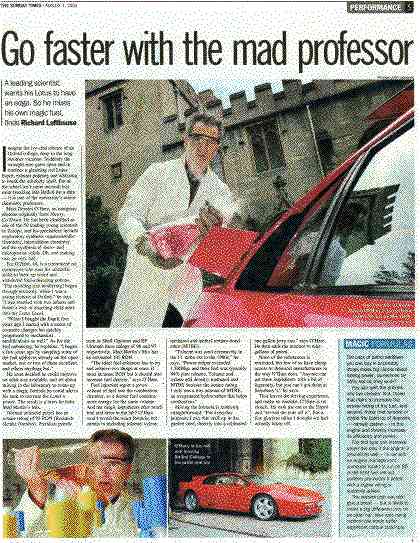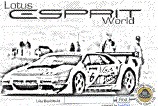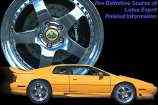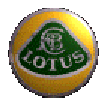1. Octane Rating
Click on image to download as a PDF (ca. 2Mb)
 Since 1912 the spark ignition internal combustion engine's compression ratio had been constrained by the unwanted "knock" that could rapidly destroy engines. "Knocking" is a very good description of the sound heard from an engine using fuel of too low octane, it is the result of violent pressure rises (explosions) after ignition in the cylinders.
Since 1912 the spark ignition internal combustion engine's compression ratio had been constrained by the unwanted "knock" that could rapidly destroy engines. "Knocking" is a very good description of the sound heard from an engine using fuel of too low octane, it is the result of violent pressure rises (explosions) after ignition in the cylinders.
The fuel property the octane ratings measures is the ability of the unburnt end gases to spontaneously ignite under the specified test conditions. The molecules comprising the fuel mixture are unable to withstand pre-flame conditions without decomposing into species that will autoignite before the flame-front arrives.
The octane rating of petrol is quantified by a research octane number (RON). The RON or motor octane number method typical mild driving conditions, while the MON method represents severe, sustained high speed, high load driving.
To slightly confuse matters the US use an "antiknock index" to rate pump fuel which is defined as {(RON + MON)/2} so their values are always lower for the same performance rating. In the UK Super Unleaded pump fuel is legislated to have a have minimum value of 97 RON. However, Optimax from Shell has 98 RON index while the latest offering from BP, "Ultimate" is 97 RON.
In summary, the higher the octane rating the fuel the slower the fuel is to burn/autoignite. Cars with intelligent igniting timing ECU's and knock sensors can adjust the advance and spark timing to optimise for the higher octane fuel and so produce a more efficient ignition.
The Lotus Esprit ECU’s (both 4-cylinder and V8’s) do not have adaptive ignition timing. Fixed spark tables are stored in the memcal within the ECU, if knock is detected then ignition retard is applied until the condition goes away, in extreme cases turbo boost is shut down.
2. The Mad Professor' Fuel
However, there is more to fuel than just the Octane Ratings ! If you want to use fuel to produce more power from your engine need to consider a number of other parameters. Such as the Heat of Vaporisation, Heat of Combustion, Fuel Density, Flame Temperature, Stoichiometric Flame Speed of the individual components that make up a typical fuel mixture. So as you can see it is a complicated business. In fact before the FIA outlawed it the F1 teams used to make "designer" fuels for each circuit they went to on the Grand Prix calendar.
The Mad Professor Fuel is based on an Optimax Stock + a number non-carcenogenic aromatic hydrocarbons and a few oxygenates to aid combustion. It is 10% denser than stock fuel and has a calculated RON index of between 102-105.
3. Additives
Firstly, if you have an Esprit I would recommend you use a high quality fuel from a recognised oil company. In the UK Optimax and Ultimate have been shown to be beneficial in properly conducted tests. It is not just that these fuels have a headline Octane Rating of 98 RON they contain well researched mixtures of detergents and antifoul agents that really work on cleaning the top half of the engine.
Fuel additives and the other hand is a totally different matter. I have chemically analysed about 3 or 4 that are really available from motor factor outlets. Most are a complete and utter waste of money. Do not be tempted. One or two professional motorsport products I looked at were a very precise mixture of 2 or 3 reagents, there are expensive however you might be able to feel the effects.







